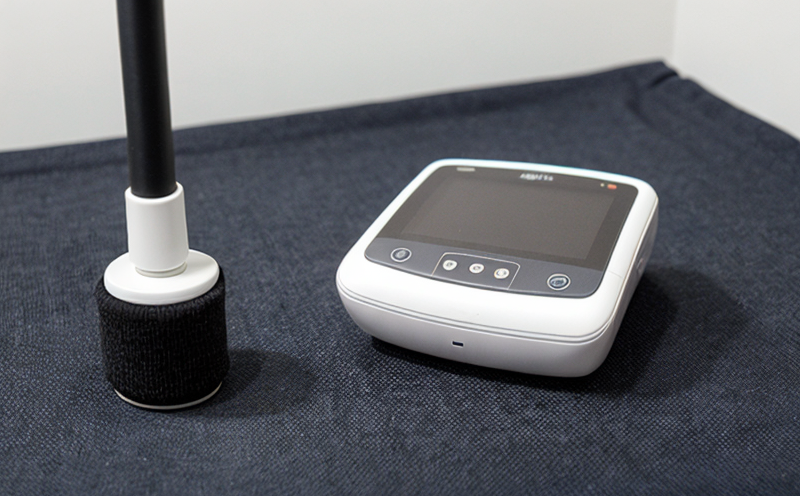EN ISO 105-B02 Lightfastness of photochromic smart textiles
The CEN standard, EN ISO 105-B02, provides a method to determine the lightfastness of photochromic smart textiles. This test is crucial in ensuring that photochromic materials maintain their color-changing properties over time under various environmental conditions such as sunlight and artificial light sources.
Photochromic textiles are an innovative category within the textile sector where fibers can change color upon exposure to UV radiation, returning to their original state once the radiation source is removed. These textiles find applications in smart clothing, sunglasses, and window coverings. The lightfastness test ensures that these materials retain their functionality throughout their lifecycle, thereby enhancing product quality and consumer satisfaction.
The standard outlines a procedure for exposing specimens to a combination of artificial light sources designed to simulate natural sunlight. It is important to note that this method does not aim to replicate all aspects of real-world exposure but rather provides a controlled environment to assess the stability of photochromic properties over time.
For accurate testing, the following key steps are involved:
- Specimen Preparation: The textile samples must be prepared according to the specific requirements outlined in EN ISO 105-B02. This includes washing and drying procedures to ensure that any initial color changes due to processing are accounted for.
- Light Exposure: Specimens are exposed to a combination of UV and visible light sources designed to simulate direct sunlight, using an artificial light source like xenon-arc lamps or fluorescent lamps with a specific spectrum.
- Color Measurement: After exposure, the color changes in the specimens are measured using spectrophotometric instruments. These measurements help quantify the extent of fading and determine compliance with specified standards.
- Data Analysis: The data collected from color measurement is analyzed to assess the lightfastness performance. This analysis may include statistical methods to ensure consistent results across multiple test runs.
The accuracy of these tests directly impacts the reliability of photochromic smart textiles, ensuring they meet market and regulatory requirements while also enhancing their overall quality.
| Light Source | Spectral Range | Exposure Time | Repetition |
|---|---|---|---|
| Xenon-arc lamp | UV-A, UV-B, Visible | 30 minutes per cycle | 5 cycles |
| Fluorescent lamps | UV-C, Visible | 1 hour per cycle | 3 cycles |
The test results are reported in terms of color change units, which provide a quantitative measure of the extent to which photochromic properties have been affected by light exposure. This information is invaluable for R&D engineers and quality managers in optimizing product performance.
Scope and Methodology
The scope of EN ISO 105-B02 encompasses the evaluation of photochromic smart textiles' resistance to fading when exposed to light. This includes both UV radiation and visible light, which are key factors in determining the longevity of these materials.
Table 1 provides a detailed overview of the light sources used in this test along with their spectral ranges and exposure times:
| Light Source | Spectral Range | Exposure Time |
|---|---|---|
| Xenon-arc lamp | UV-A, UV-B, Visible | 30 minutes per cycle |
| Fluorescent lamps | UV-C, Visible | 1 hour per cycle |
The methodology involves exposing the specimens to these light sources for specified durations and then measuring any changes in color using spectrophotometric instruments. The measurements are taken before and after exposure to determine the degree of fading.
The test is repeated multiple times under controlled conditions to ensure consistency and reliability of results. This approach helps in identifying any potential issues early on, allowing for corrective measures to be implemented during the product development phase.
Benefits
Implementing EN ISO 105-B02 lightfastness testing offers several benefits that are crucial for maintaining high-quality standards and ensuring customer satisfaction:
- Informed Decision Making: Quality managers and R&D engineers can make informed decisions about material selection based on the test results, which reflect real-world performance.
- Regulatory Compliance: By adhering to international standards like EN ISO 105-B02, companies ensure they meet regulatory requirements and stay ahead of market trends.
- Increased Customer Trust: Demonstrating adherence to high-quality testing protocols builds trust with customers, leading to repeat business and positive brand reputation.
- Enhanced Product Quality: The rigorous testing process helps identify any potential issues early in the development cycle, ensuring that products meet or exceed expectations.
- Competitive Advantage: Companies that invest in advanced testing methods like EN ISO 105-B02 can differentiate themselves from competitors by offering superior quality and reliability.
- Sustainability: Ensuring that photochromic textiles maintain their functionality over time contributes to sustainable practices by reducing waste and extending product lifespan.
These benefits collectively contribute to the overall success of companies operating in the textile sector, particularly those involved with smart and functional textiles.
Competitive Advantage and Market Impact
The implementation of EN ISO 105-B02 lightfastness testing provides significant competitive advantages in the market:
- Innovation Leadership: Companies that invest in advanced testing methods can lead the way in innovation, offering cutting-edge products to consumers.
- Customer Satisfaction: By ensuring high-quality and reliable performance of photochromic textiles, companies enhance customer satisfaction, leading to increased loyalty.
- Brand Reputation: Demonstrating commitment to quality through rigorous testing protocols can significantly boost brand reputation and market position.
- Market Differentiation: Offering products that meet or exceed international standards sets companies apart from competitors, attracting more discerning customers.
- Sustained Market Share: Consistently high-quality products supported by robust testing protocols help maintain a strong market share in the competitive textile industry.
- Global Reach: Adherence to international standards like EN ISO 105-B02 opens up opportunities for global expansion, as companies can meet regulatory requirements across different markets.
These advantages collectively contribute to a company's overall success in the textile sector, particularly within the smart and functional textiles category.





